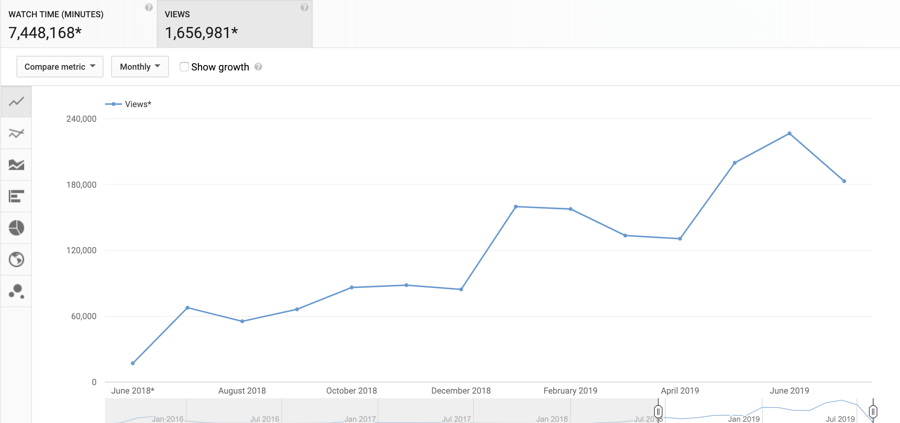Buying stocks is not that difficult, but if you have no experience, you will still need some guidance. Additionally, realize that it is difficult to consistently make money by buying stocks. Most mutual funds underperform the broader market indexes, meaning even professionals struggle to consistently make a profit. Therefore, please take everything you read below with a grain of salt.
Before Purchasing
Don’t buy until you know what type of stock you want to buy and under what circumstances you want to sell it. Go to your local library and search online for books and other information about stock investing. Some good books to start with include “The Intelligent Investor” by Benjamin Graham, “Security Analysis” and “Common Stocks” by Philip Fisher.
- The first rule of the stock market is to buy low and sell high. Simply put, you want to buy a stock when the price is right and sell it when the price is high.
- Suppose you buy 100 shares at $15 per share. That’s a $1,500 investment. If, after two years, the stock price rises to $20, your $1,500 investment becomes $2,000, giving you a profit of $500.
- Suppose you buy 100 shares at $50 per share. You invested $5,000. If the stock price drops to $25 two years later, your $5,000 investment will only have $2,500 left, causing you to lose $2,500.
Don’t confuse stock price with company value. The value of a company is its market capitalization, or market value. Market capitalization is calculated by multiplying a company’s stock price by the number of shares outstanding.
- If a company’s stock price is $100 and the company issues 500,000 shares, its market value is $50,00,000.
- Therefore, if company A with a stock price of $7 has 5 times the number of shares of company B with a stock price of $30, company A’s market value will be higher.
- Market capitalization is the total value of a company’s shares, not the value of the company itself. Investors estimate the value of a company, and there’s no fixed way to do that because you’re estimating how the company will perform in the future.
Understand more fundamentals of stocks. The key to success in the stock market is to be able to understand what a company’s future returns will be. This is an estimate, a bet is being placed. However stock prices are largely affected by perceptions of the company’s current situation, not always the stock’s intrinsic value.
- When more people want to buy a stock than want to sell it, the stock price will rise. When more people want to sell a stock than want to buy it, the stock price will fall. Therefore, the price of a stock reflects how well people think the company is doing, not how the company is doing based on some dry formula.
- In such a situation, a company may have a strong stock price and a large number of shares but still be overvalued because people think the company is worth more than it is. Likewise, a company with a mediocre share price and a small number of shares may be undervalued because people think the company is worth less than it is.
- Your goal in stock trading is: in addition to buying low and selling high, find undervalued stocks and buy them, and also find overvalued stocks and sell them.
- Stock prices are also affected by earnings reports, which companies release four times a year. If a company releases a strong earnings report, the stock price is likely to rise. If a company releases an earnings report that falls short of expectations, the stock price is likely to fall.
Manage your finances. Pay off as many loans as possible and lend less. Ideally, all high-interest loans should be paid off first, and the only debt you should have is your mortgage. Before you start buying stocks, open a separate savings account and deposit enough money to cover 3-6 months of living expenses.
Consider whether stocks fit into your overall financial plan and whether you should buy individual stocks or mutual funds. Find out how to decide whether to buy stocks or mutual funds.
- Mutual funds are baskets of stocks. For example, a mutual fund might include 100 stocks. So when you invest your money in this mutual fund, you’re essentially investing in several different stocks at the same time. If the share price of a certain company in the fund rises, it may not have a big impact on the whole. Likewise, if the price of one of these companies drops, it won’t have a serious impact on your overall investment.
- Buying individual stocks carries higher risks than buying funds. At the same time, the income will be higher. If you buy a stock and its share price drops significantly, you will suffer a huge loss on your investment. If the stock price soars, you can make much more money than investing in a fund.
Do your due diligence. Research a company thoroughly before buying a stock. You’re making a bet on how well you think a company will perform going forward. Starting from the financial website, you can quickly understand its business philosophy and key financial data.
- Determine whether a company is reliable by looking at its balance sheet and income statement for the past 10 years. Companies with high debt and low profits should be immediately eliminated from your consideration.
- Look at the most recent annual and quarterly reports (SEC 10-Ks and 10-Qs). If you can, browse the company’s website. If there is an analysis report, also read it.
- If you’re still interested, you may want to talk to the company’s customers, competitors, suppliers, and eventually the company’s executives themselves to better understand its business.
Make a wish list. Ideally, the stocks on your list should be stocks of good companies that you want to own no matter what. Warren Buffett, one of the most successful investors today, said that if you can’t hold a stock for 10 years, don’t even think about holding it for 10 seconds.
- Set a target purchase price for each stock and stick to that price. For example, let’s say you’ve completed your due diligence and determined that Minnesota Mining and Manufacturing (3M) is a stock worth buying, but the current price at $95/share is too high and you want to buy it at $80/share. If you look at its historical price, you’ll see that its stock price peaked last year and was trading between $80 and $90. The price two and a half years ago was just $45. Therefore, $80/share is a very reasonable target price. Why not set the price lower, say $75/share?
- The key to successful investing is sticking to a long-term strategy. So once you set a target and the stock reaches the target price, you buy, and when the stock moves lower, you continue to buy.
How to Buy
Direct purchase. Some companies offer direct stock purchase plans (DSPP). Search online or call or write the company you want to buy stock from and ask if they offer such a program. Ask them for copies of the program prospectus, application form, or other relevant documents.
- Most plans allow you to invest as little as $50 per month, which is automatically deducted from your bank account.
- Pay close attention to the fees involved. There are some companies, such as Procter & Gamble, that offer no-fee investment plans.
- Direct stock purchase plans also allow you to automatically reinvest dividends. Your dividend is a compensation to stockholders based on company profits. Some companies will even give a certain discount, such as 5 points, on reinvesting dividends.
Use an online brokerage. Type online brokerage into a search engine and you will find many brokerages through which you can buy and sell stocks online. Be sure to compare their fees and see if there are any hidden charges before signing up. Minimizing fees is the key to successful investing.
- Most brokers charge no more than $10 per transaction, regardless of the transaction amount. Some brokers will even offer a certain number of free trades if you meet the criteria, so look carefully before signing up with a broker. The best brokerages also don’t charge for reinvesting dividends and offer good customer service and a variety of research tools for free.
- Deposit with your brokerage firm. (Your brokerage needs this capital to buy stocks for you). Usually, the minimum amount is $2,000, but it may only be $500. Some online brokerages don’t even require a deposit of funds.
- Your brokerage must report your stock transactions to the IRS. You will need to fill out the necessary forms and send them back to the dealer, even before they allow you to make your first trade. (Your brokerage firm will send you the form.)
- Choose your stocks. Inform your brokerage of the company’s “code” (a 1-5 digit code), the price you want to buy at, the number of shares you want to buy, and the validity period of your bid (for example, today or until canceled). If you don’t know the specific price at which you want to buy (called a ‘limit order’), you can also place an order at the market price, which means your order will be executed immediately at the current stock price.
Or, choose a service-oriented brokerage. Service brokers are similar to the brokers mentioned above, but they charge higher fees and provide investment advice and more analytical tools. Since service brokers are mostly paid on a commission basis, the more frequently they encourage you to trade, the higher their profits will be, even if this is not the best option for you.
Tips
- Before buying any stock, stop, watch, and learn. Simulated trading. Don’t trust anyone’s advice until you know for sure that what they say comes true. If you are considering buying a trading system from someone, check out some authoritative financial forums such as trade2win or Moneytec. You’ll find most of the system’s names on it… along with a bunch of unhappy customers.
- Most traders lose money, and very few fund managers can beat the index at any time. Trading stocks is easy, but making money is difficult. So find a system, prove it to yourself, and don’t deviate from it!
- Although you should “diversify” your stock portfolio by owning stocks in different industries, consider buying into industries you’re familiar with first (tech stocks if you’re tech-savvy, auto stocks if you read a lot of car magazines, etc).
- Many people mistakenly believe that buying stocks must go through a brokerage. This is not true. If you have enough confidence and the necessary experience, you have the opportunity to buy stocks without the involvement of a brokerage firm. Although this is not an option that most newbies consider, once you are established in this field and have sufficient experience, it can be considered.
- Try using stop losses in paper trading. If it works, consider setting a stop loss before each trade and enforce it rigorously. A stop-loss order means that if a stock falls below a certain price, the stock will be sold. For example, if you own 100 shares of Union Pacific (UNP) and purchased each share at $100. If you enter a stop-loss sell order to sell 100 shares of Union Pacific when the stock price is $90, your sell order will be filled when the stock price drops to $90 or below. Be aware that if the stock price drops too sharply, your transaction price may be well below the $90 stop loss price. To avoid being executed at a price lower than the stop loss price, you can use a stop loss limit order, which means that when the stock price drops to the stop loss limit price you set, your order becomes a limit order at this price instead of Will ensure the order is completed. Don’t make decisions when prices change! But be aware that in an unstable market, the stock price can easily fall to 50% and then increase fivefold. If you’re trying to invest, it’s better to buy low and sell high than to buy high and then try to speculate and sell higher.
- Be aware that the investments you make through each brokerage firm are protected by Securities Investor Protection Corporation insurance of up to $500,000. If you invest more than $500,000 through a brokerage, you should consider choosing a different brokerage to diversify the risk of your brokerage going bankrupt.
- There will be lots of free advice from authorities. There is also a lot of free, seemingly reliable advice that is misleading and wrong.
- Don’t buy too much at one time to protect yourself from company-specific risks (i.e., the collapse of a single stock due to unforeseen adverse developments in some affiliate); a balanced portfolio of stocks is more likely to appreciate in the long run.
- Keep detailed records of all stock transactions, including stock name, transaction amount, costs (including commissions, fees, and costs after adjustments), transaction price, and transaction date. You will need this information when calculating capital gains tax. From time to time, you will need to adjust your costs to account for capital gains, stock splits, losses, carried interest, dividends, etc.
- Many existing trading textbooks and bibles – especially those on technical analysis – include assumptions that are so often presented that they are passed off as fact, but are unverified! If you don’t believe it, download a stock’s share price into a data worksheet, verify it with the moving average crossover analysis found in every technical analysis guide, and shudder at how much money you could lose.
- Most traders now charge you a flat trading commission regardless of the size of your single transaction, but some still charge commissions based on the share price per share. In addition, you will need to pay regulatory fees to the U.S. Securities and Exchange Commission when you sell.
- Instead of requiring you to buy a stock for a specific amount (and within a certain period), you can also buy it at the “market price” and the transaction will be completed immediately.
- Realize that when someone heavily promotes a stock, it’s often because they want to sell. In other words, they hype a product to sell it. This way of looking at things is called “reverse thinking.” So when someone says “buy”, it’s actually time to “sell”, or if you don’t own the stock now, it’s not a good time to buy at all! Always DYOR (do your research). Conversely, when someone recommends selling, it probably means it’s time to buy, so take a good look at the stock.
- Index funds, unlike individual stocks, provide a balanced, low-cost (low-fee or no-fee) way to invest with sustained long-term returns.
- Due to transaction fees, it can be difficult (or take a long time) to recoup costs on a single transaction under $1,500.



